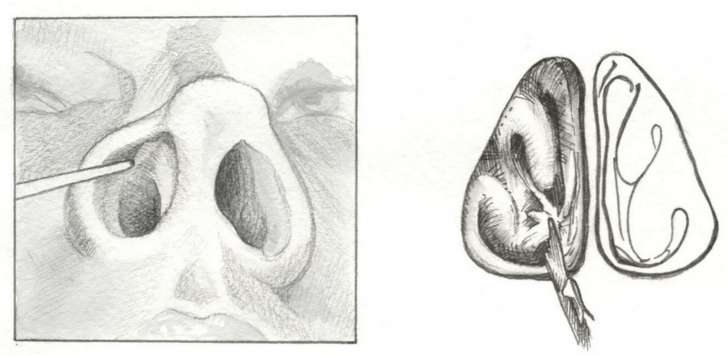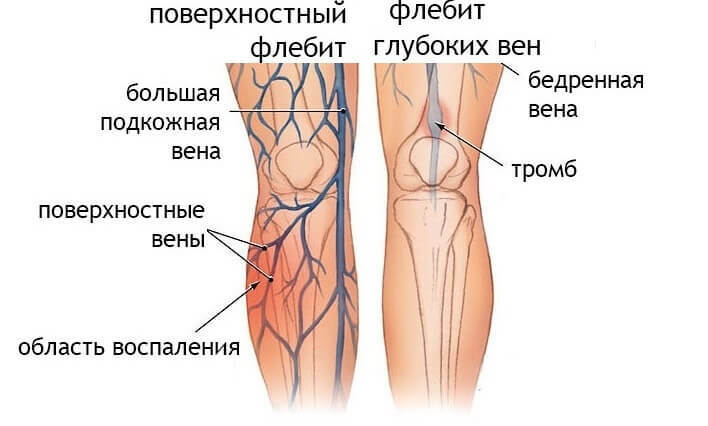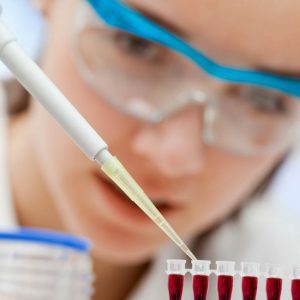The spleen: where it is and how it hurts, symptoms, treatment
The spleen is an unpaired parenchymal organ of the abdominal cavity; the largest lymphoid organ in vertebrates.
The main function of the spleen is to cleanse the blood from bacteria. It is an important organ for the human body. Negative manifestations of the work of this organ are manifested both in the form of pain, and as simply a person's poor health.
Content
- Where is the spleen in the human body?
- Significance for the body
- Symptoms and types of diseases of the spleen, treatment
- Injury
- With an abscess
- With tuberculosis
- Splenic vein thrombosis
- Spleen infarction
- Asplenia
- Neoplasms (cysts, echinococcosis)
- Septic spleen
- How to deal with sudden pain
- Correct diagnosis
- Nutritionist recommendations
- Medications
- Traditional methods of treatment
- Preventive measures
- Life without a spleen
- In custody
Where is the spleen in the human body?
Where it is located is a lymphoid organ, which looks like a gland, it is located below the diaphragm, in the abdominal cavity on the left side.
Dimensions:
- the length of a healthy organ is 16 cm;
- width - 6 cm.;
- thickness - 2 cm;
- weight - up to 200 gr.
The spleen is located behind the stomach, in contact with the kidney, large intestine and pancreas. It has an oval shape.
Significance for the body

The production of lymphocytes, the storage of blood, which is enriched with nutrients with oxygen - these are the main functions of this organ.
The spleen blocks the penetration of pathogenic substances into the human body by filtering the blood. She also works in conjunction with the organs of the immune system.
During normal functioning of the organ, a person has good immunity to viruses and bacteria.
The important role of the organ in the implementation of metabolic processes in the body is to promote the production of iron.
During pregnancy, the organ produces the necessary white blood cells and red blood cells.
Symptoms and types of diseases of the spleen, treatment

The organ itself is in the capsule, painful sensations appear if it is stretched. With inflammation, the organ enlarges.
This causes pain in the adjacent organs. The spleen has no pain receptors.
Congenital malformations of the organ:
- lack of a spleen;
- organ size;
- form and structure;
- weakness of the ligaments, which leads to displacement of the organ;
- additional shares.
Injury
If pain appears after a blow or fall, it is imperative to visit a doctor, at least your therapist. After an organ injury, the artery may be damaged, internal bleeding may open and blood will enter the abdominal cavity.
How spleen hurts - sharp painful spasm in the left side, low blood pressure, possible nausea, vomiting, thirsty, pale skin. Drawing painful sensation in the left side, radiating to the lower back. Increased pain when inhaling.
With an abscess
At abscess - pain under the rib, passing into the chest and shoulder. Also nausea, vomiting, dizziness. Suppuration of an organ can be recognized by a high temperature and an increase in the spleen itself.
It is treated with surgical intervention - splenectomy.
Read also:Sideroblastic anemia
With tuberculosis
With a strong increase in size, they diagnose tuberculosis. The spleen is affected by Koch's sticks, which are transferred from other organs. It is almost impossible to diagnose at an early stage.
Splenic vein thrombosis

May occur in the event pancreatic cancer, trauma, infection, etc. clogging of the vein occurs, which prevents the outflow of blood from the organ, which leads to an increase in size.
The only way out in this situation, splenectomy.
Spleen infarction
This disease occurs mainly due to previous diseases that have a negative effect on the entire body.
Symptoms: abdominal cramps, nausea, severe pain, fever. For surgical intervention, it is necessary to determine the area of the lesion.
Treatment: pain relievers and a relaxed lifestyle.
The spleen has a rare ability to heal itself.
Asplenia

Sometimes a person is born without a spleen at all, this can be a genetic disorder. T. e. congenital asplenia. This is often accompanied by other vices:
- heart disease;
- light three-lobed;
- reverse arrangement of internal organs.
Lack of spleen in the body is dangerous, as it can develop sepsis.
Asplenia is diagnosed by blood counts and radioisotope scans.
Children born with asplenia usually die in the first year of life, as it is accompanied by heart defects.
Neoplasms (cysts, echinococcosis)
If the pain is dull and does not stop, then this is a symptom that a neoplasm (cyst) has appeared inside the spleen, while the person's appetite and activity decrease.
In the cyst itself, in some cases, pus appears, from which rupture of the cyst is possible. If pus enters the abdominal cavity, complications are inevitable.
With a cyst already detected, the patient needs to regularly undergo examination of the condition of the cyst by a specialist.
Malignant neoplasms are quite rare, but it is still recommended to consult a doctor at the first manifestations of pain.

Echinococcosis Is a formation in the spleen caused by a parasitic echinococcus worm.
The larvae of this worm, getting into the organ, completely destroy it.
It is difficult to recognize, since the pain is dull, a feeling of heaviness, diarrhea, allergies.
A doctor's examination shows changes. It is diagnosed by instrumental examination.
Treatment of an organ in the event of a cyst or neoplasm is usually is treated surgically.
Septic spleen

This is a disease characterized by severe blood congestion in the organ. Leads to the fact that the tissues are softened to a state of porridge.
The spleen gives a signal about the disease of other organs.
If it hurts, and the spleen and gives in liverthen it could be a sign of a beginning cirrhosis.
Also, some diseases of the circulatory system affect the work of the spleen:
- leukemia;
- hypoplastic;
- anemia;
- Gaucher.
Symptoms:
- mucous membranes bleed;
- weakness;
- dizziness.
Pain in the organ can be a symptom of diseases such as:
- typhoid fever;
- malaria;
- hepatitis A;
- sepsis;
- chronic pancreatitis;
- stones in gallbladder.
Read also:Decreased hemoglobin in women and men, what does this mean and what should be done?
Women's (gynecological) diseases can also be reflected by a dull pain in the spleen. When an organ is enlarged, the organs around it are compressed. What can hurt them. This is another reason for an immediate visit to a doctor.
A problem with an organ detected in time can save a person from further more serious consequences.
How to deal with sudden pain
- call an ambulance,
- we take a position - lying,
- you need to relax and calm down,
- do not apply compresses (not warm, not cold),
- do not take pain relievers,
Correct diagnosis
Diagnosis methods:
- Detailed questioning (the nature of the pain, previous illnesses, etc.);
- Feeling of the patient (palpation), whether there are any changes in the size of the organ, sensitivity; mobility,
- Ultrasound (both spleen and pelvic organs);
- Puncture;
- Blood test (to determine the resistance of erythrocytes);
After diagnosis, methods and methods of treatment are determined.
When making a diagnosis of spleen disease, there is a very high chance of error. Treatment can be applied only after appointment by a specialist.
Nutritionist recommendations
The fastest and most effective method of adjusting the functioning of an organ is diet.
Use:
- iron-rich foods;
- fatty fish;
- nuts;
- cabbage;
- Garnet;
- honey;
- avocado;
- apples;
- citrus.
Do not consume or reduce to a minimum:
- butter;
- salt;
- coffee;
- sour fruits;
- sour vegetables;
- smoked meats;
- salting;
- alcohol (strictly prohibited).
It is necessary to take food in small portions, at least 5-6 times a day.
Medications
The selection of drugs is individual. It is necessary to eliminate dysfunctions of the spleen, to avoid complications.
In the case when the treatment with drugs does not give a result, the question of the operation is resolved.
Traditional methods of treatment

Along with medications, folk remedies can help treat the spleen.
Basic recipes:
- Chicory root decoction. Fill in 20 gr. chicory root powder with one glass of boiling water, leave for 40 minutes. Strain, take not hot, 30 minutes before meals, 2 tbsp. l., in the morning, at lunchtime and in the evening.
- Packaged chicory extract, take according to the instructions.
- Hop cone decoction. Pour one tablespoon of cones with a glass of boiling water, leave for 30 minutes. Strain. We accept: 2 tbsp. l. three times a day, before meals.
These methods not only help to heal the spleen, but also help to heal the whole body.
- Herbs: strawberry leaves, violet flowers, string, nettle:
- take and mix in equal proportions.
- Pour 2 tablespoons of herbs with 0.5 liters. boiling water, we insist for 1 hour. Drink the broth in the morning at lunch and in the evening.
- A decoction from a shepherd's purse. This remedy is very effective in treating the spleen:
- 20 g of dried herbs in two cups of boiling water;
- let it brew for at least 20 minutes;
- filter, take 5 times a day (warm).
- Also for the treatment and prevention of diseases of the spleen raisins help well. Fill fifty grams of raisins with 200 ml. grape vinegar, at night. Take in the morning, eat berries and drink no more than 30 ml of liquid. In this way, you can get rid of tumors and stop bleeding.
- Have a good healing effect radish and horseradish. You need to take a large radish, cut out the middle, fill it with grated horseradish, put honey on top, bake in the oven.
Take two tablespoons. in the morning and one tablespoon before bedtime, at least 10 days.
There is another method in traditional medicine that is used to treat the spleen - phytoapplication.
Read also:Thrombocytopenia
It especially helps with enlargement of the organ. Steamed herbs are spread on the spleen according to its shape, cover with oilcloth and cloth on top.
Herbs should not be heated. more than 40 degrees. Time for a compress is 30 minutes. The position is lying.
Preventive measures
- Priority to a healthy lifestyle.
- Limiting alcohol intake.
- Physical activity, but not heavy. Running (two hours after eating), frequent walks in the fresh air are very useful.
- Check your body frequently for infections.
- Strengthen immunity.
- Protect from all kinds of damage, blows to the abdomen, falls.
- Take a blood test every six months.
Life without a spleen
It is possible to live without a spleen. But it is important to remember that the main function of the organ is to protect the whole organism from the penetration of infections and pathogenic microbes.
If the organ is absent for any reason, then its functions are performed by the bone marrow and liver. Cleansing the blood from infection is impaired.
There is a high probability of thrombosis, because platelets are no longer excreted from the human body. In this case, there is a need for taking medications, and constant monitoring of the doctor.
If the spleen is removed, then the likelihood of contracting viral infections is significantly increased, especially children are susceptible to this.
In custody
A person can live without a spleen, but this does not mean that it is not needed. Each organ in the body has its own irreplaceable function.
There are many diseases of the spleen, and it can be extremely difficult to diagnose them.
The main advice - at the slightest discomfort, consult a doctor, do not pull, can't stand the pain.
After all, the disease is easier to treat when it is in its infancy. It is much more difficult to bring the body back to normal in the advanced stages of the disease. Sometimes the treatment is delayed for many months. The patient's own vigilance can help him.
Maintaining a healthy lifestyle will prevent the occurrence of many diseases, not only the spleen, it is important not to forget this.



